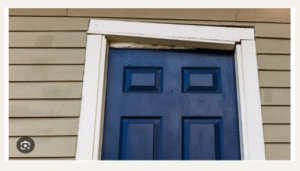Canvassing
Canvassing is a marketing technique that involves direct contact with potential customers or clients to promote a product, service, or cause.
Field Marketing Employment Agreement
General information and regulations of Avalon Roofing and Exterior
Avalon Employee Public Image and Customer Service Pledge
Perception of the business that affects customers
Avalon Field Marketing Behavioral Policy
Understanding the core policy's
Field Marketing the Basics
Training and Continuing Education,
Dress Code,
Technology,
Field Marketing Door Knocking Objectives,
How Avalon Evaluates Field Marketers
Avalon Field Marketing Vehicle Use and Mileage
Using company or personal vehicles
Avalon Field Marketing Training Schedule and Training Pay
Understanding what Training will look like and how much pay you will receive
Lead Generator Basics
Canvassing Basics
How a Shingle is Put Together
What to know about every layer of a Shingle
Identifying damage
How to identify damage to a roof
What To Look For
Examples of what to look for while canvassing
How to Approach the House
Knowing how to look, knock, and mark the house
Using the Slap System For Appointment Setting
Following the SLAP formula
Scripts (Initial Contact Options) (S, L, A)
Reference scripts to go by while at the homeowner's door
Rebuttals
What to do when you run into push back
Extra Videos to Watch
Different looks on how to Canvas
No questions yet
Be the first to ask your question! You’ll be able to add details in the next step.
Ask a new question
Add an answer
About Lesson
Wood Siding & Doors
Causes by age, moisture, and wear and tear
Problems an old wooden door can face are warping, sticking, and paint issues
Wooden windows are mostly painted over and/or painted shut
When replaced can save homeowners over half on their energy bills

Here are some negative effects of having wooden siding:
- High Maintenance:
- Wood siding requires regular painting, staining, or varnishing to protect it from the elements and prevent deterioration.
- Depending on your climate, repainting or restraining might be necessary every few years.
- This ongoing maintenance can be time-consuming and costly.
- Vulnerability to Moisture:
- Wood absorbs moisture, making it susceptible to rot, decay, and mold growth, especially in humid or wet climates.
- Improperly sealed wood can warp and crack.
- Water damage can also compromise the structural integrity of your home.
- Pest Infestation:
- Wood is a natural food source for insects like termites, carpenter ants, and wood-boring beetles.
- These pests can cause significant damage to the siding and potentially spread into the rest of the house.
- Regular inspections and pest control treatments may be necessary.
- Fire Risk:
- Wood is a flammable material, which could lead to higher home insurance premiums.
- While some wood siding products are treated with fire retardants to increase flame resistance, it still remains more flammable than other siding materials.
- Sun Damage:
- Prolonged exposure to UV rays can cause the paint on wood siding to fade and the wood itself to chip, peel, or crack.
- Lower Durability:
- Compared to materials like steel or fiber cement siding, wood is softer and more prone to damage from impacts like hail.
- Extreme temperature fluctuations can cause wood to expand and contract, leading to buckling and warping.
- Potential Environmental Issues:
- If the wood is not sustainably sourced, its use can raise environmental concerns.
- Due to its shorter lifespan compared to some other siding options, wood siding may need to be replaced more often, increasing resource consumption.
In summary, while wood siding offers a unique aesthetic appeal, it’s crucial to be aware of its potential drawbacks, including its high maintenance requirements, susceptibility to moisture and pests, fire risk, and lower durability compared to alternative siding materials.
Join the conversation

